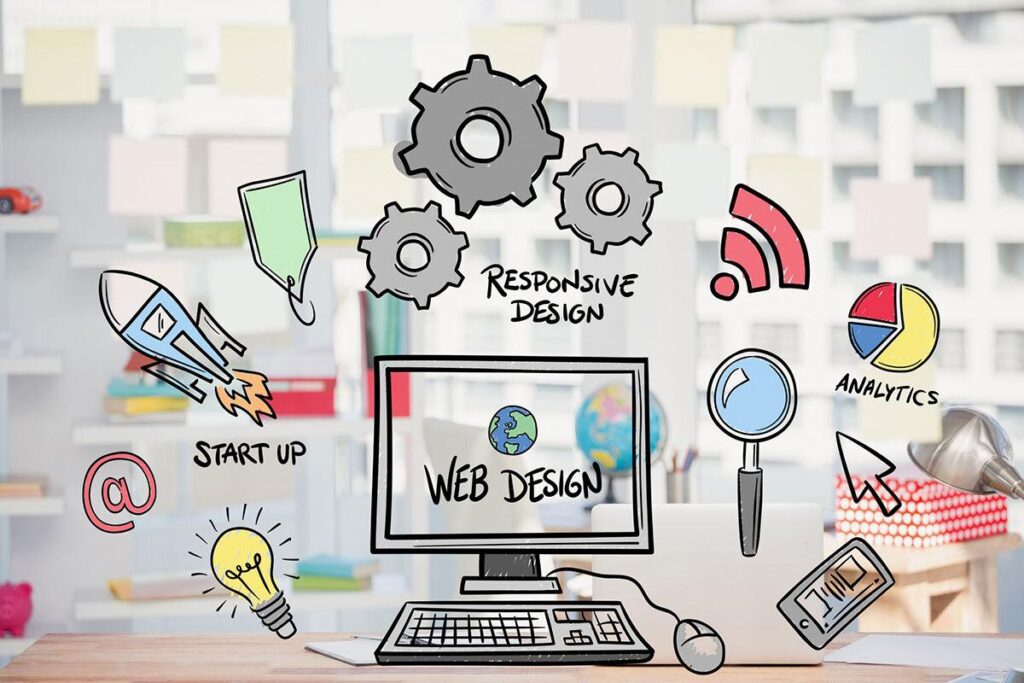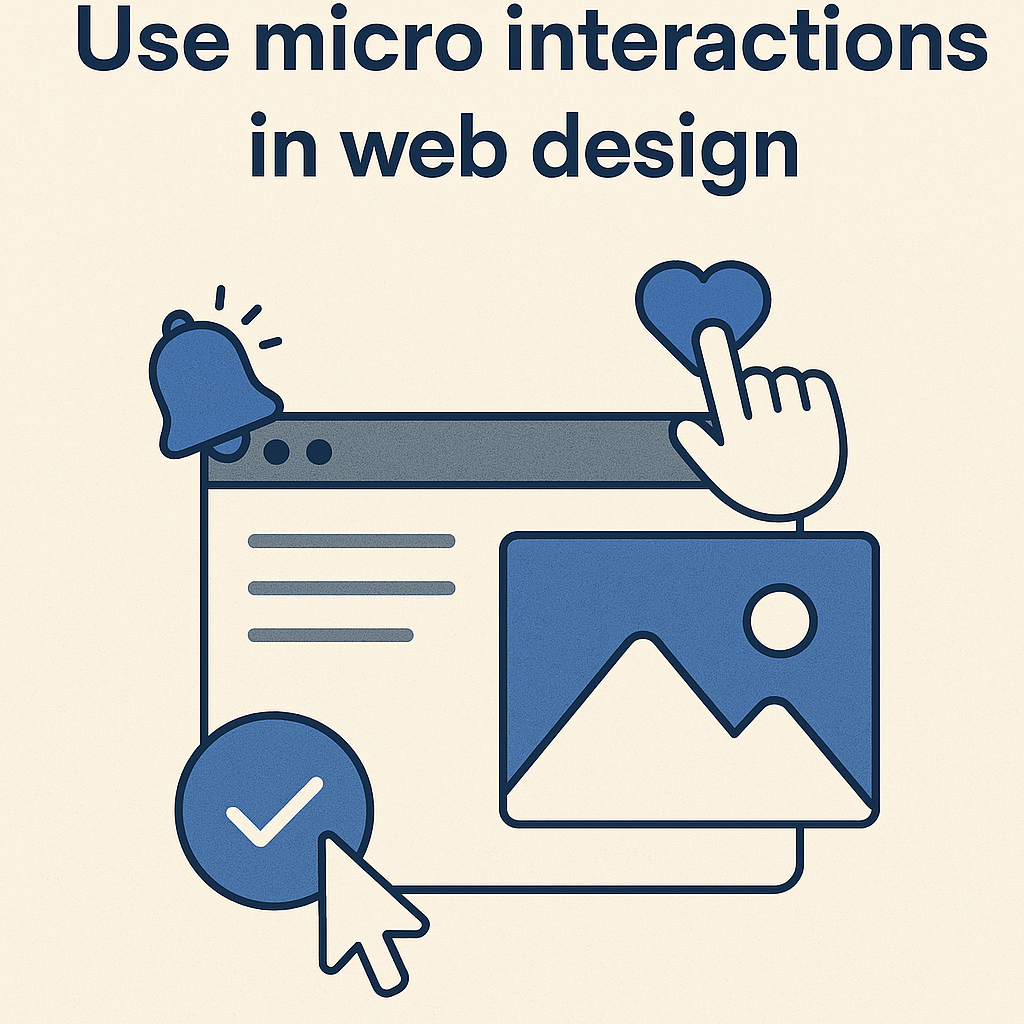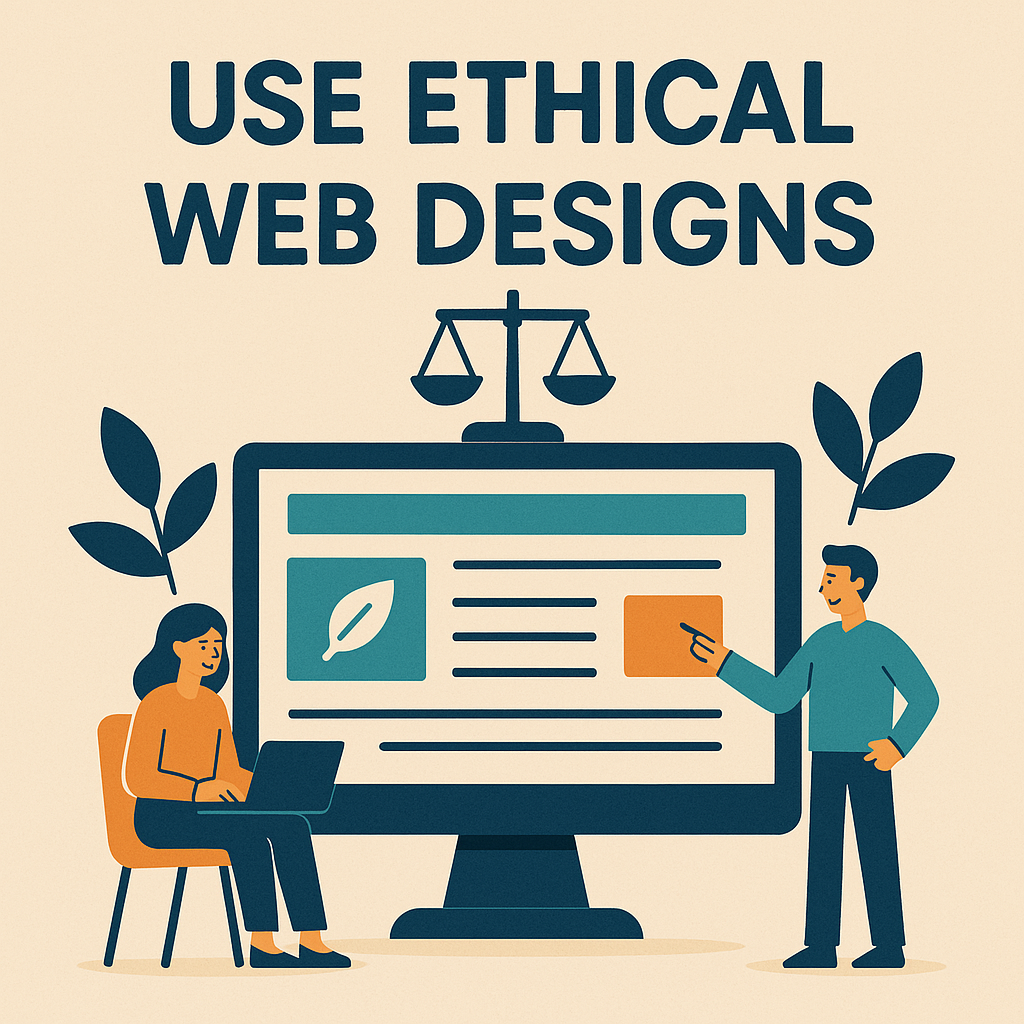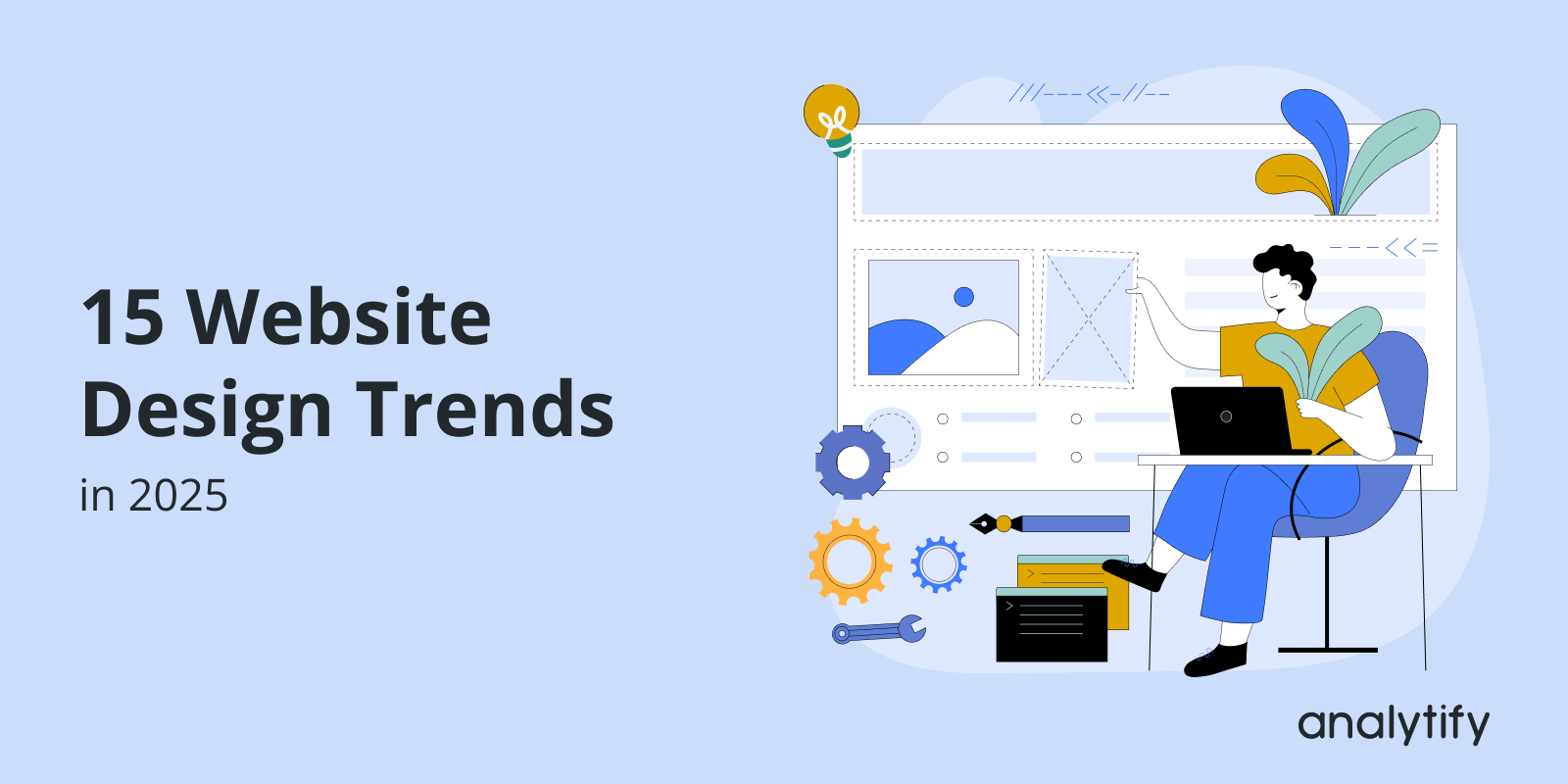
15 Website Design Trends in 2025 You Don’t Want to Miss
Buckle up, design enthusiasts, because the web design landscape is about to shift. If you are not paying attention, your website is going to look like a relic from the dial-up era.
You have to compel yourself to forget everything you thought you knew about predictable user experiences and static layouts. They just won’t cut it anymore! 2025 is the year when interactive and immersive web design trends reign supreme, with the heavy influence of AI-powered tools and the focus on building genuine connections with website visitors.
For those who have guessed already, we are talking about a digital revolution where your website is not just displaying information but engaging with it; users are not just visitors but active participants in a dynamic experience.
Are you ready to ditch the old-school website design doldrums? Yes? Let’s take you through the mind-boggling and downright wild trends influencing the website design industry in 2025 and beyond. You simply cannot afford to miss this if you are designing or redesigning websites!
Website Design Trends (TOC):
Hyper-personalization Driven by AI
AI-driven personalization is not new because it has been a while for artificial intelligence to influence the way businesses are run and how they communicate with their target audience. In 2025, the stage is set for AI-driven personalization to transform the way users interact with websites.
Since machine learning algorithms are getting smarter by the day, you can expect websites to cater not just to content but also to color themes and navigation structures for individual users. All this is in addition to personalizing product recommendations based on users’ searches and past purchases, as well as 24/7 customer service using AI-driven chatbots.
The goal, you ask? It is to make every user feel that the website has been uniquely designed just for them.
Imagine this: You have arrived at a website’s homepage that dynamically shifts according to your past interactions, behavior, and even your mood from facial recognition software.
You no longer have to imagine this because AI-driven personalizations are making this a reality. So, you can design and build websites that dynamically adapt and transform themselves according to the user.
Integration of Text-to-Audio Features
As digital accessibility becomes the focus, text to audio functionality is becoming a revolutionary web design feature. Contemporary users with visual impairments, reading difficulties, or even no disabilities at all are turning to text-to-speech (TTS) technology to access content with ease. According to estimates, by 2025, 30% of all web pages will have inbuilt audio narration, enabling users to listen to articles, blog posts, and even website navigation instructions.
Websites are making use of excellent AI-based text-to-audio solutions like Murf AI to render natural-sounding voiceovers that make online content more accessible and engaging. The trend is particularly gaining traction on news websites, learning websites, and e-commerce, where adding an audio choice enhances user experience and retention.
In the imminent future, the integration of text-to-audio will be default, allowing individuals to have a choice to constantly switch between read and listen mode.
The Era of Experimental Typography
Say goodbye to traditional fonts — 2025 is embracing big, wild, and energetic typography. From interactive types that respond to cursor action to enormous statement fonts that take over the screen, text is no longer merely a vehicle for legibility but a core design element. Brands are applying giant letters, gradient-filled text, and even text manipulation to deliver interactive, visually driven experiences.
Interactive and 3D Experiences are Leading the Way
Conventional flat web design is quickly becoming a relic of the past because, in 2025, we are seeing rich and interactive 2D and 3D elements. These elements draw users into the experience and make their website interactions much more immersive and memorable.
Web designers like yourself don’t even need to do much to include 3D elements in the website design. This is all thanks to WebGL (Web Graphics Library). WebGL is a JavaScript API that allows website designers and developers to render interactive 2D & 3D graphics within any compatible web browser. You don’t need plugins because it uses the computer’s graphics hardware.
Besides WebGL’s use for creating hyper-realistic product displays, animations, and interactive storytelling, there’s also an increase in parallax scrolling with 3D depth effects.
This trend is expected to stay because it is transforming how web pages are viewed. The addition of these elements and effects makes users feel like they are entering a digital world instead of simply browsing a website page.
Voice Search Optimization
Along with text to speech integration, voice search is another trend that you cannot run away from, and it is here to stay. This trend is again a major boost to accessibility and user experience. According to reports, 50% of consumers are using voice search daily because it is convenient and allows them to multitask without the hassle of typing their questions or thoughts.
This is why more and more websites are being optimized for voice search, and this is paving the way for a VUI (voice user interface) in web design strategy.
Similar to text to speech, voice search offers an inclusive experience for people who are visually impaired. It also provides a hands-free experience and is a winning trend among users battling mobility challenges.
This year, you should take VUIs into consideration when designing and developing websites. Make sure the visual content is easily accessible using schema markup, alt text, conversational language, streamlined site navigation, and direct answers. Furthermore, your website must be optimized with localized and long-tail keywords, as well as other phrases that would typically appear in voice searches.
As you work to optimize these features, it’s important to track how users are interacting with your website. Analytify is a Google Analytics plugin for WordPress that simplifies website tracking and reporting. It provides easy-to-understand insights directly in your WordPress dashboard, helping you make data-driven decisions to optimize your site’s design and improve user engagement.
AI-Generated Websites
Artificial Intelligence is not only helping web design — it’s building complete websites from scratch. AI-based design software examines user tastes, industry standards, and UX best practices to build aesthetically pleasing, high-performing websites automatically. Not only does this accelerate the development cycle, but it also delivers optimized design elements for various groups of people.
Envision a website that adapts its UI/UX elements in real-time according to user activities — this is no longer science fiction but an imminent reality.
Futuristic, Cyberpunk Aesthetics
In 2025, utility-based web tools have become one of the most effective ways to support niche user groups, particularly in fast-paced environments like competitive gaming. These tools are no longer just about function; they now embody modern web design principles such as responsive layouts, clean interfaces, and seamless real-time interactions.
Inspired by gaming and sci-fi culture, cyberpunk looks are sweeping web design trends. Look for neon glow effects, glitch animations, digital grain textures, and graphic sci-fi typography to rule on websites of top-of-the-line brands.
By focusing on minimalist structure, intuitive navigation, and purpose-built functionality, such tools represent the shift toward specialized digital experiences. They’re built not just to look good, but to deliver purposeful insights within seconds — a design priority that’s gaining traction in 2025 across many industries, not just gaming.
Dark, high-contrast color schemes with electric blues, purples, and pinks are being employed to give hyper-modern, immersive digital environments.
Lottie Animations and Micro-Interactions
In 2025, Lottie animations and micro-interactions will revolutionize user interaction on websites. Say goodbye to static elements; hello to dynamic, responsive experiences that come alive.
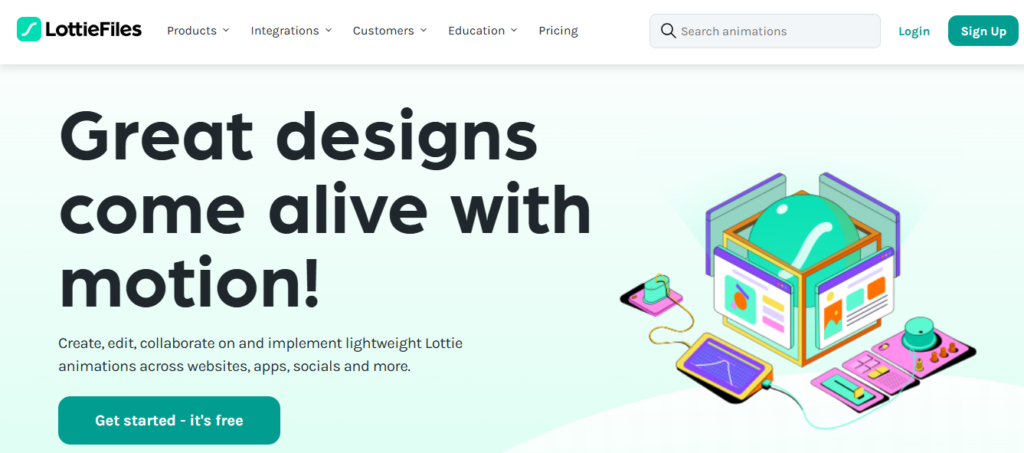
Lottie animations, with their light vector format, allow for complex, smooth animations without compromising performance. This translates to complex loading sequences, whimsical hover effects, and even data-driven visualizations becoming the norm.
Microinteractions, the subtle animations in response to user interactions, will move beyond basic feedback.
Envision context-sensitive replies that tailor the user experience, responding to personal preferences and device capability. Visualize a shopping cart icon softly animating when adding an item or the interface of a weather app softly changing with live conditions. All these aspects will coexist, resulting in a smooth and wonderful user experience. They’ll be designed thoughtfully to respond instantly, walk users through complicated interfaces, and even elicit emotional reactions, making tedious tasks enjoyable mini-moments.
This represents the move towards more intuitive, expressive, and ultimately more human-focused web design, where each interaction feels meaningful and satisfying.
The Return of Maximalist Design
While minimalism reigned supreme in web design for decades, brutalism and maximalism are making a monumental comeback in 2025. Designers are leaning towards jarring colors, raw layouts, and asymmetrical compositions to craft rough, striking aesthetics.
Imagine websites that resemble digital zines, bursting with bold neon, retro ’90s web design, and disorganized layering. Brands looking to make an impression are abandoning clean designs in favor of structured chaos.
Scroll-triggered Storytelling
Web design in 2025 is interactive storytelling, with scrolling initiating animations, transitions, and narrative movements. Sites are becoming cinematic experiences, taking the user through a story as they scroll through the page. Scroll-activated video sequences, animated infographics, and dynamic timeline reveals will become the norm in bringing content to life in a way never thought possible.
Motion UI and Liquid transitions
The static web is dead — 2025 is about fluid motion UI and liquid-smooth transitions. Get ready to witness gel-like effects, morphing objects, and buttery smooth page transitions in place of the old hard-cut page layouts. This gives rise to a hyper-fluid user experience that is organic, futuristic, and highly immersive.
The Low-code and No-code Revolution
The days of having to code for website design are over. No-code and low-code solutions are enabling designers to build sophisticated, interactive websites without ever writing a line of code. Software such as Webflow, Framer, and Editor X is facilitating the creation of dazzling websites with ease and full artistic liberty.
Augmented Reality Web Experiences
The convergence of Augmented Reality (AR) with website design will revolutionize the online experience by 2025. No longer limited to specialist apps, AR is penetrating browser boundaries, delivering immersive experiences directly within websites. This trend will significantly transform e-commerce, enabling consumers to virtually “try before they buy” with greater realism than ever before.
Consider picturing furniture in your own home or precisely measuring clothing fit via virtual try-ons, all natively within a web page. The trend is more than just novelty, leading to real-world applications across industries. Interior design websites will allow customers to virtually stage furniture and accessories, and fashion stores will provide virtual fitting rooms, dramatically improving purchase confidence and lowering return rates.
In addition, interactive holographic models will deliver comprehensive product demonstrations, redefining consumers’ interaction with complicated products. This AR web adoption is an essential milestone for online shopping, enabling more interesting, informative, and ultimately satisfying customer experiences.
Inclusive and Ethical Design Takes Center Stage
Accessibility is no longer an afterthought — these days, it’s at the heart of web design. Sites in 2025 are concentrating on colorblind-safe palettes, voice-based navigation, AI-driven text descriptions, and dyslexia-aided fonts to keep users of all abilities included. The aim is to make the web a truly universal space where design works for everyone.
Embedded Videos for a Dynamic Homepage
In 2025, embedded videos will move beyond mere product demonstrations and become part of dynamic homepage designs. Get ready for rich, immersive video content to be natively integrated into website landing pages, building engaging and exciting user experiences. These videos will extend beyond static images, providing dynamic stories, brand narratives, and interactive product displays right within the homepage.
Such a trend resonates with online users’ shortening attention spans, dispensing information at a fast and efficient rate. Ranging from cinematic brand launches to participatory product guides, in-film videos will establish a stronger and more physical connection with website visitors.
More importantly, improvements in video compression and delivery technology, streaming will enable those experiences to run smoothly on both fast loads and multiple platforms to provide an unwavering, effective first impression. This transformation means a move toward more visually oriented websites, with video content serving as a central component in terms of grabbing viewers’ attention and propelling user interaction.
Frequently Asked Questions About Website Design Trends
What are the top website design trends for 2025?
In 2025, key web design trends include AI-driven personalization, interactive 3D experiences, voice search optimization, and mobile-first design. These elements aim to enhance user engagement and accessibility.
How does AI impact website design in 2025?
AI enhances website design by enabling personalized user experiences, automating content delivery, and optimizing site performance based on user behavior and preferences.
Why is mobile-first design important in 2025?
With the majority of web traffic coming from mobile devices, mobile-first design ensures websites are optimized for smaller screens, providing seamless navigation and improved user engagement.
What role does voice search play in web design for 2025?
Integrating voice search features into web design caters to the growing use of voice-activated searches, offering users convenient and hands-free navigation, thereby enhancing overall accessibility.
Summing Up: 2025 is the Year of Bold, Immersive, and Accessible Design
2025 marks a pivotal shift in website design trends, demanding immersive, bold, and accessible experiences. The stage is set for it to break all norms and embrace motion. Expect websites that offer deeply interactive experiences, embedded with text-to-speech features and voice search capabilities. Websites are becoming more engaging, smarter, and infinitely creative.
So, buckle up! The future of website design is nothing short of revolutionary, exciting, and crazy. AI’s influence is going to get even more prominent as time goes by, and not embracing these new, exciting technologies will leave you behind.
Are you a website designer? This is your moment to push boundaries, experiment, and create memorable digital experiences that captivate users like never before.
Have we missed any important trends? Share in the comments below.

